- Direct from the grower
- Freshly shipped
- Fast delivery & pickup point
- Spicy support

Japan is located in East Asia and consists of four major islands (Honshu, Hokkaido, Kyushu and Shikoku) and thousands of smaller islands. Japan, despite today's hectic high-tech era, is characterized by simplicity, tradition and harmony. This is also reflected in Japanese cuisine, as culinary traditions are deeply rooted in Japanese culture and history.
Japanese cuisine is known for its perfect balance of flavors, texture and presentation. The presentation of the food is very important. Each dish is prepared with great precision and simplicity, with nature being the main source of inspiration.
Sushi, with its versatility and sophistication, has become an international symbol of Japanese cuisine. The combination of fresh fish, perfectly prepared rice and beautiful presentation appeals to people all over the world.
Japanese cuisine is known for its use of some distinctive ingredients and flavors that form the basis of many dishes. The dishes have balanced flavors, with sweet, salty, sour and umami coming together harmoniously. Umami means "essence of deliciousness" in Japanese, and the flavor is often described as a savory, full-bodied taste that gives a dish depth.
Rice
Rice is the backbone of the Japanese diet and is the basis of many dishes. The quality of rice is essential, and the way it is prepared and seasoned with vinegar makes it an indispensable element in sushi and many other dishes.
Fish
As an island nation, Japan has a rich seafood culture. Fresh fish, such as salmon, tuna, mackerel, eel and trout, is widely used in sushi, sashimi and other dishes. Seafood such as shrimp, squid, crab and lobster are also widely used. Fish and seafood are often eaten raw or lightly prepared to preserve their natural flavors. Another Japanese fish specialty is shiokara. Here the fish is salted and fermented, usually it is made from the intestines of squid, sardines or mackerel.
Soy Sauce
Four main ingredients are used in making traditional soy sauce: soybeans, wheat, salt and water. Fermentation is an important part of the process, and the longer the soy sauce ferments, the deeper the flavor of the soy sauce becomes. Brewers can take months or even years to produce high-quality soy sauce. It is used as a dipping sauce, flavor enhancer and marinade.
Wasabi
This tangy green paste, derived from the wasabi plant, is often mixed with soy sauce and used as a spicy condiment with sushi and sashimi. More common and cheaper versions of wasabi are made with horseradish.
Seaweed
Nori is dried seaweed and is used to roll sushi and as a garnish. It has a distinctive salty taste and adds texture and umami to dishes. Wakame is another type of fresh seaweed widely used in Japanese cuisine. It has a crunchy bite with lots of flavor and aroma and is delicious as a topping on or as a filling in sushi, sashimi and salads.
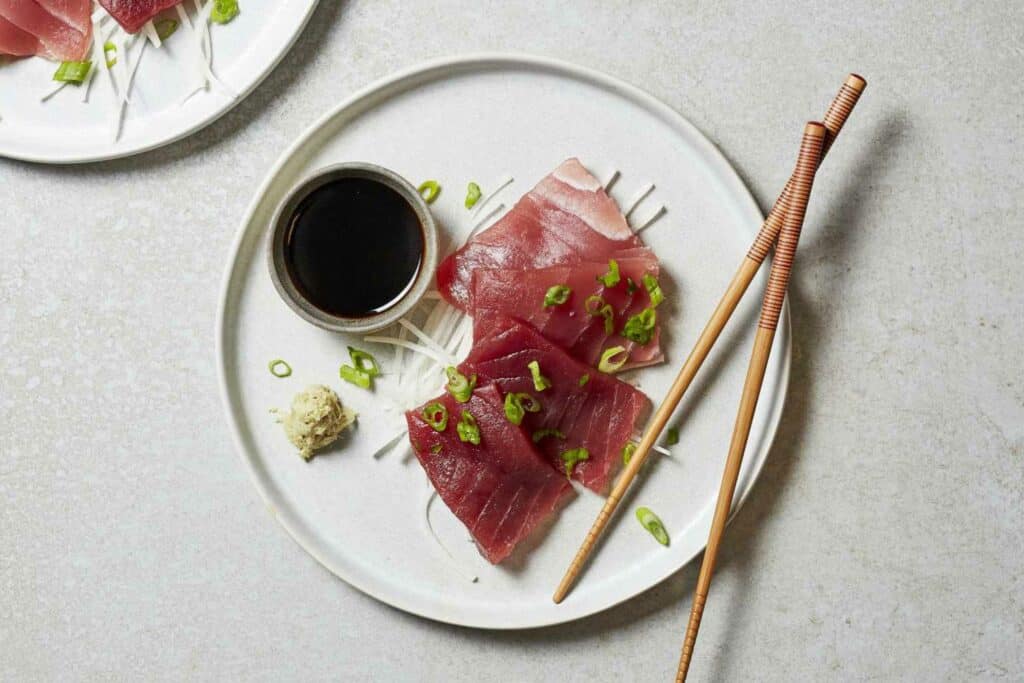
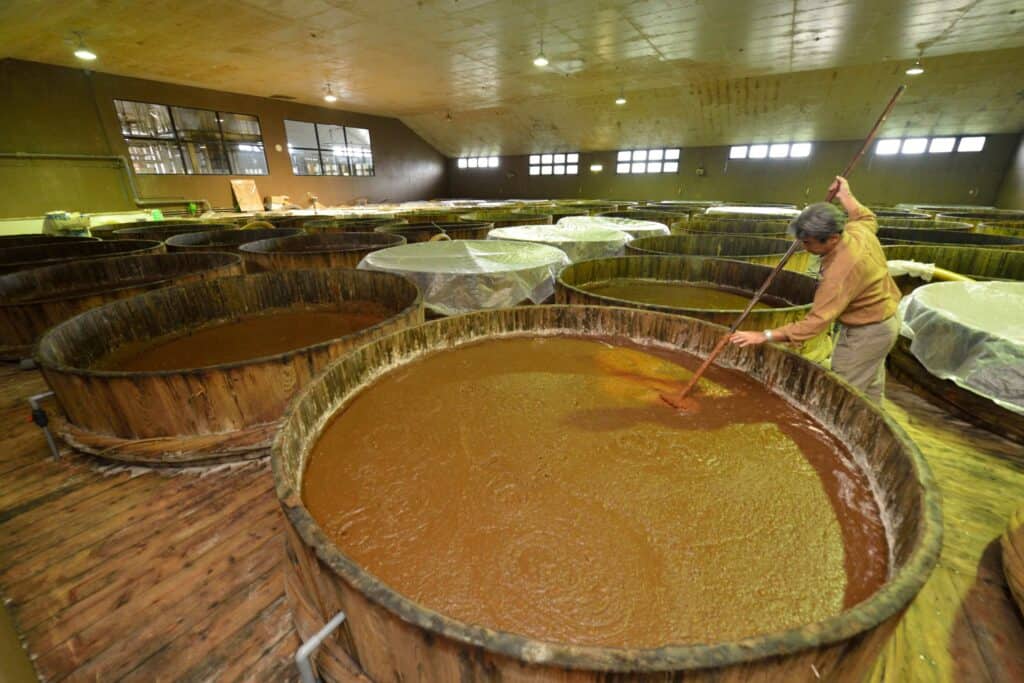
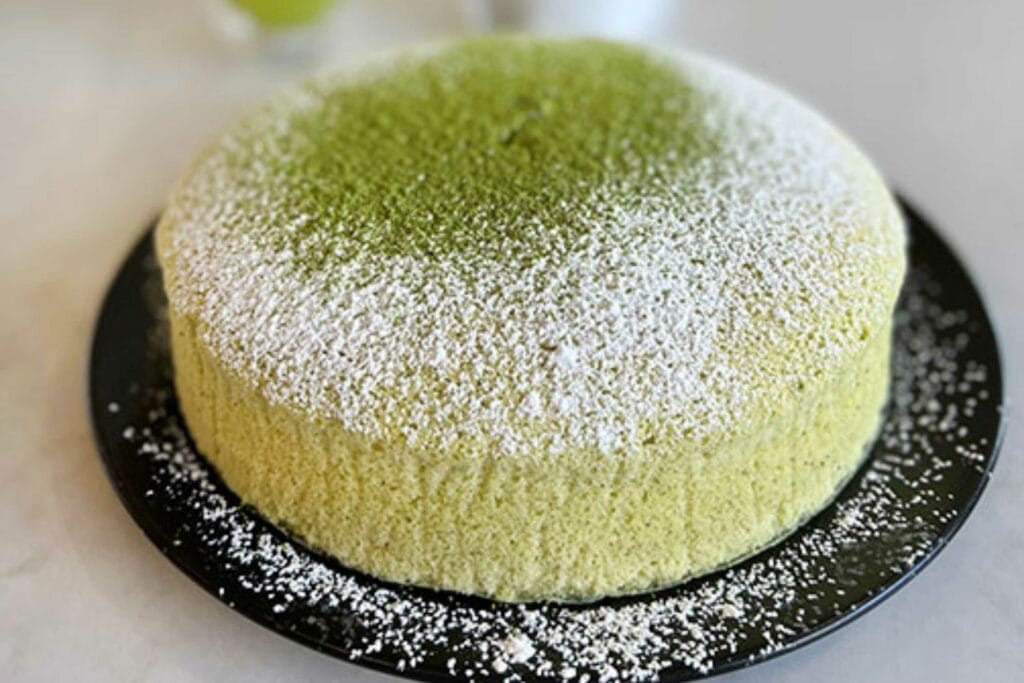
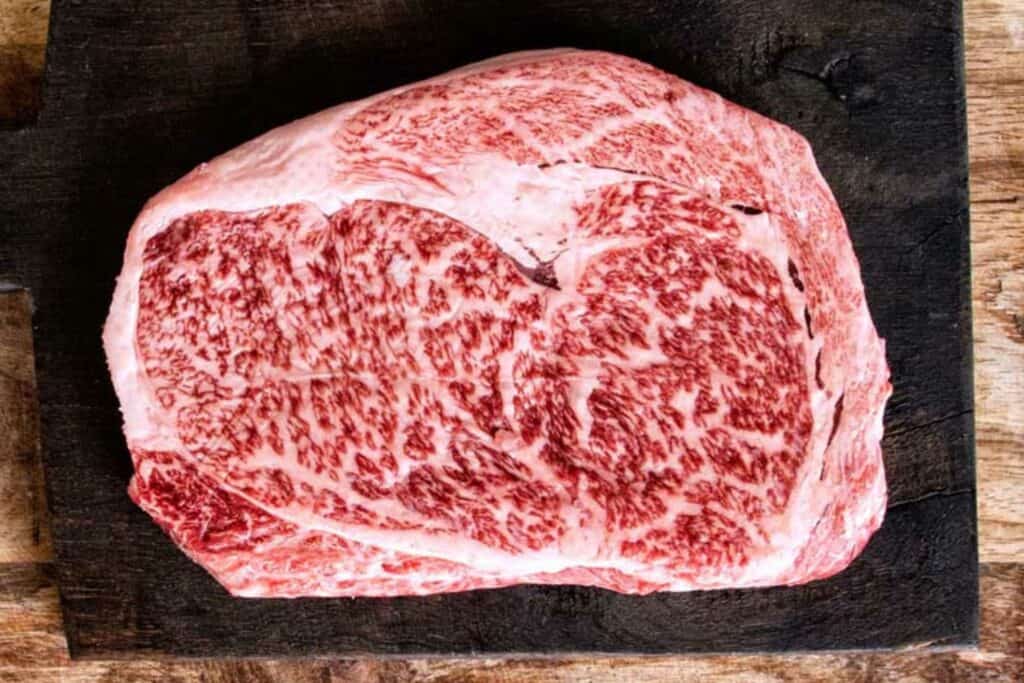
Miso
Miso is a paste made from fermented soybeans. It is used to make miso soup and serves as a base for sauces and marinades. It comes in several varieties, from sweet to savory, and adds depth and complexity to dishes.
Dashi
Dashi is a broth used in Japanese cuisine as the basis for numerous recipes. The fish broth is made from Kombu (seaweed) and Bonito flakes (dried, smoked and fermented tuna).
Matcha
This is a finely ground green tea with a rich, earthy flavor. It is popular in tea ceremonies, but is also used in cakes, ice cream and some savory dishes.
Rice wine
Sake is a Japanese rice wine made by fermenting rice, not distilling it. Sake is served in special jugs (tokkuri) and small cups (choko or sakazuki). It can be drunk either hot or cold, depending on the sake and preference. Before serving, it is sometimes shaken gently. It is sipped slowly to fully appreciate the flavors. It can also be used for cooking.
Mirin is the low-alcohol and sweet counterpart to Sake, which is often 40-50% sugar. Mirin is often used only for cooking.
Kobe or Wagyu beef
A very expensive type of beef, derived from the Japanese Wagyu cattle breeds raised in Japan. The cows are allowed to drink only pure water and must be fed grains such as rice, straw, corn, barley and other grains. It is known for the intense marbling in its meat. It has a refined taste, texture and tenderness.
Other common ingredients include: yuzu, shiitake, edamame beans, sesame seeds (white and black), bamboo shoots, pickled vegetables and ginger.
peppers are not as prominent in traditional Japanese cuisine as in some other Asian cuisines. Mildly spicy peppers and herbs are used to subtly enrich dishes with flavor, depth and a touch of spiciness.
The best-known fresh Japanese pepper is the Shishito. This mildly spicy, green pepper has a firm and savory flavor. In Japanese, the name Shishito refers to "head of the Lion," which the bottom of the pepper resembles. In terms of its use in cooking, it resembles the Pimientos de Padron, but in combination with typical Japanese dishes. They are traditionally roasted in the pan with some sesame oil and soy sauce. They are also delicious for teppanyaki, on a skewer with yakitori or in a batter and deep-fried as tempura.
Shichimi togarashi is a spicy spice mixture which is widely used to flavor dishes and add a touch of spiciness. It is often sprinkled over ramen, noodles and grilled dishes. It consists of seven spices: szechuan pepper, red chili pepper, sesame seeds (white and black), ginger, roasted orange peel, nori and hemp seeds.
In modern Japanese cuisine or fusion dishes, chilies play a more important role. For example, they are used to make spicier curries, sauces or marinades.

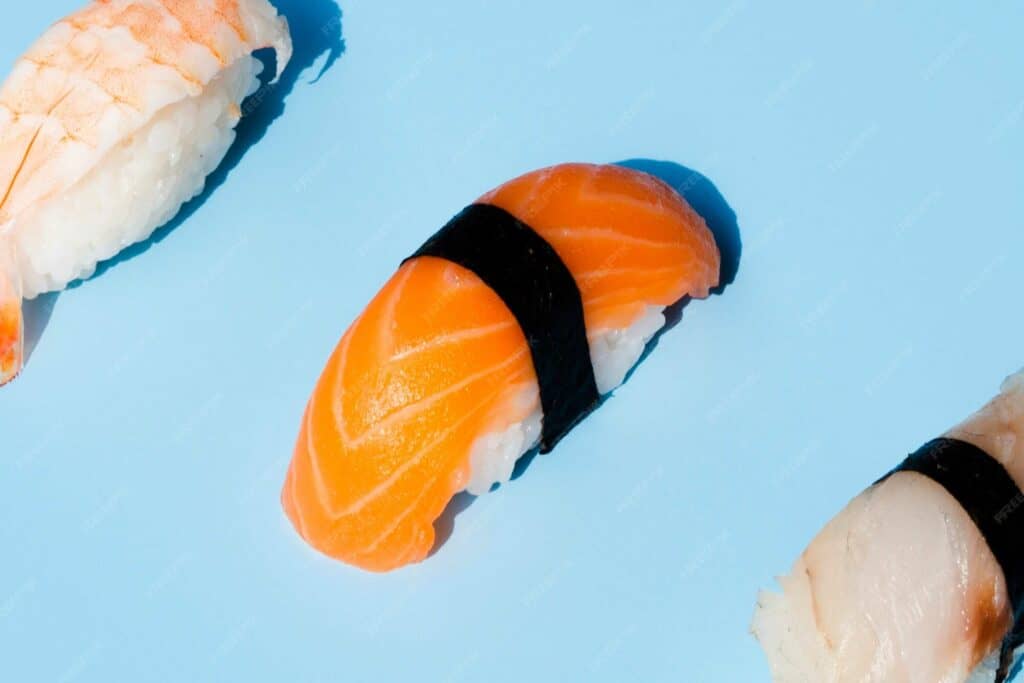
Sushi has a rich history dating back more than a thousand years in Japan. However, the origins of sushi as we know it today did not begin as the familiar sushi with fish on rice.
In the 8th century, narezushi, an early form of sushi, emerged. It was a preservation technique in which fish was fermented by combining it with rice and salt. This process helped preserve and ferment the fish, making it last longer. After a time of fermentation, the rice was discarded and the fermented fish was eaten.
By the 17th century, the technique had evolved into sushi, in which fish was served on top of pickled rice. The fish was often eaten raw, but sometimes lightly pickled or fermented to enhance the flavor.
The modern form of sushi, such as nigiri sushi (fish on a ball of rice) and maki sushi (rolls), originated in the 19th century in Tokyo. A chef named Hanaya Yohei is often credited with inventing nigiri sushi as we know it today. He began serving fresh fish directly on top of a ball of rice seasoned with vinegar, enhancing the flavors and textures.
From then on, sushi has spread worldwide and adapted to different tastes and ingredients, becoming one of the most beloved and recognizable dishes of Japanese cuisine. As a result, it has different forms and styles, each with unique flavors and presentations. The best-known varieties are:
- Nigiri: This is one of the most recognizable forms of sushi. It consists of a hand-formed ball of rice topped with a slice of fresh raw fish, such as salmon, tuna or shrimp, often with a touch of wasabi in between.
- Maki: These are sushi rolls, where rice, fish and other ingredients are wrapped with nori (dried seaweed) and compressed into rolls. Here again, there are different varieties in this, Futomaki has multiple fillings, Hosomaki has only one filling, Gunkan maki is shaped like a boat and is often filled with salmon eggs, crab, muscle eggs or seaweed.
- Uramaki: Like maki, this is a rolled sushi roll. Whereas with maki the seaweed is on the outside, with uramaki the rice is on the outside. It is therefore called "inside-out" sushi.
- Temaki: These are hand-rolled sushi, also known as "sushi cones. They are cone-shaped nori sheets filled with rice, fish, vegetables and other seasonings, similar to maki, but hand-rolled and often larger.
- Chirashi: Literally translated as "sprinkled sushi." This is a bowl of sushi rice topped with various types of fresh fish, sashimi, vegetables and egg, often artfully arranged.

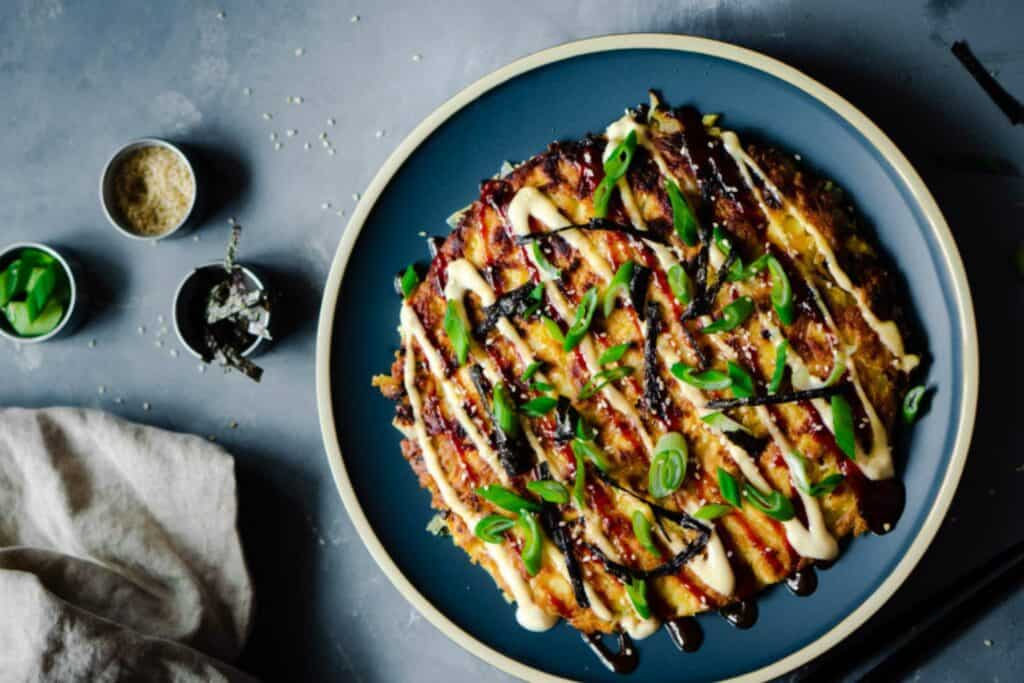

Ramen
A noodle soup, which, like sushi, is known and loved worldwide. The soup consists of noodles served in a rich broth with various toppings. Typical Japanese toppings include roasted pork (chashu), boiled egg, nori, bamboo shoots and spring onion. The flavors and textures of the broth, noodles and toppings result in a flavorful and filling dish. Variations vary by region, making each bowl of ramen unique, and there are endless combinations with different broths and toppings.
Okonomiyaki
A savory Japanese pancake, often compared to a stuffed pizza. It consists of a batter of flour, egg and cabbage with various additions such as meat, seafood, vegetables and bonito flakes, and is topped with a special okonomiyaki sauce and mayonnaise.
Chawanmushi
A savory, soft, steamed egg custard often filled with pieces of chicken, shrimp, vegetables or fish. It has a delicate flavor and texture and is served in a small bowl.
Kare
Kare is the Japanese word for curry. Japanese curry is mildly spicy, slightly sweet and mild in flavor.
Gyoza
A Japanese dumpling filled with (pork) minced meat, vegetables such as cabbage, chives, shiitake and herbs. The filling is then wrapped in a thin sheet of dough and fried and steamed.
Yakitori
These are grilled chicken skewers. Yakitori in Japan can contain different parts of the chicken, such as liver, heart, skin and sometimes vegetables are added to the skewers, then grilled over charcoal and often flavored with a tare sauce. This is a classic Japanese sauce made from soy sauce, sake and sugar.
Hōtō
A type of noodle soup popular in the Yamanashi region. It consists of wide, flat noodles cooked in a hearty miso or vegetable broth with various vegetables and sometimes meat.
Kitsune Udon
A bowl of udon noodles in a light dashi broth, garnished with fried tofu, which is often characterized by its sweet taste. This dish offers an interesting mix of flavors and textures.
The Japanese capital Tokyo is one of the best dining cities in the world, with restaurants on every corner. The has its own authentic style of sushi, which is called Edomae sushi. 'Edomae' is Japanese for 'for Tokyo,' by which they mean the sushi is made with fish from Tokyo Bay. The emphasis is on high quality day fresh fish and seafood. Edomae sushi is served as nigiri sushi, made with a specific rice called "shari. The rice is mixed with vinegar, sugar and salt and then shaped by hand into elongated rolls. The fresh fish and seafood go on top of the rice ball, giving it a minimalist look. You'll often find unique seafood and specialties you can't get anywhere else, such as with sea urchin.
Monjayaki, a local specialty of Tokyo, is a kind of savory pancake with a liquid consistency. Prepared with various ingredients such as vegetables, seafood, meat and batter, it is mixed and baked on a hot griddle until it takes on a creamy texture.
Tsukemen is a variation of ramen that is popular in Tokyo. It consists of thick noodles served with a separate bowl of hot soup or broth. You dip the noodles in the soup before eating them, making each bite intensely flavorful.
Another well-known dish is the Katsu sandwich. This is a delicious sandwich made with a fried pork schnitzel (tonkatsu), often topped with fresh cabbage and a sauce. It is a popular snack found at many stalls and restaurants in Tokyo.
In Tokyo, you will also find many Tendon restaurants. This is a bowl of tempura, deep-fried vegetables, seafood or meat served on a bed of rice with a special sweet and sour tempura sauce on top.


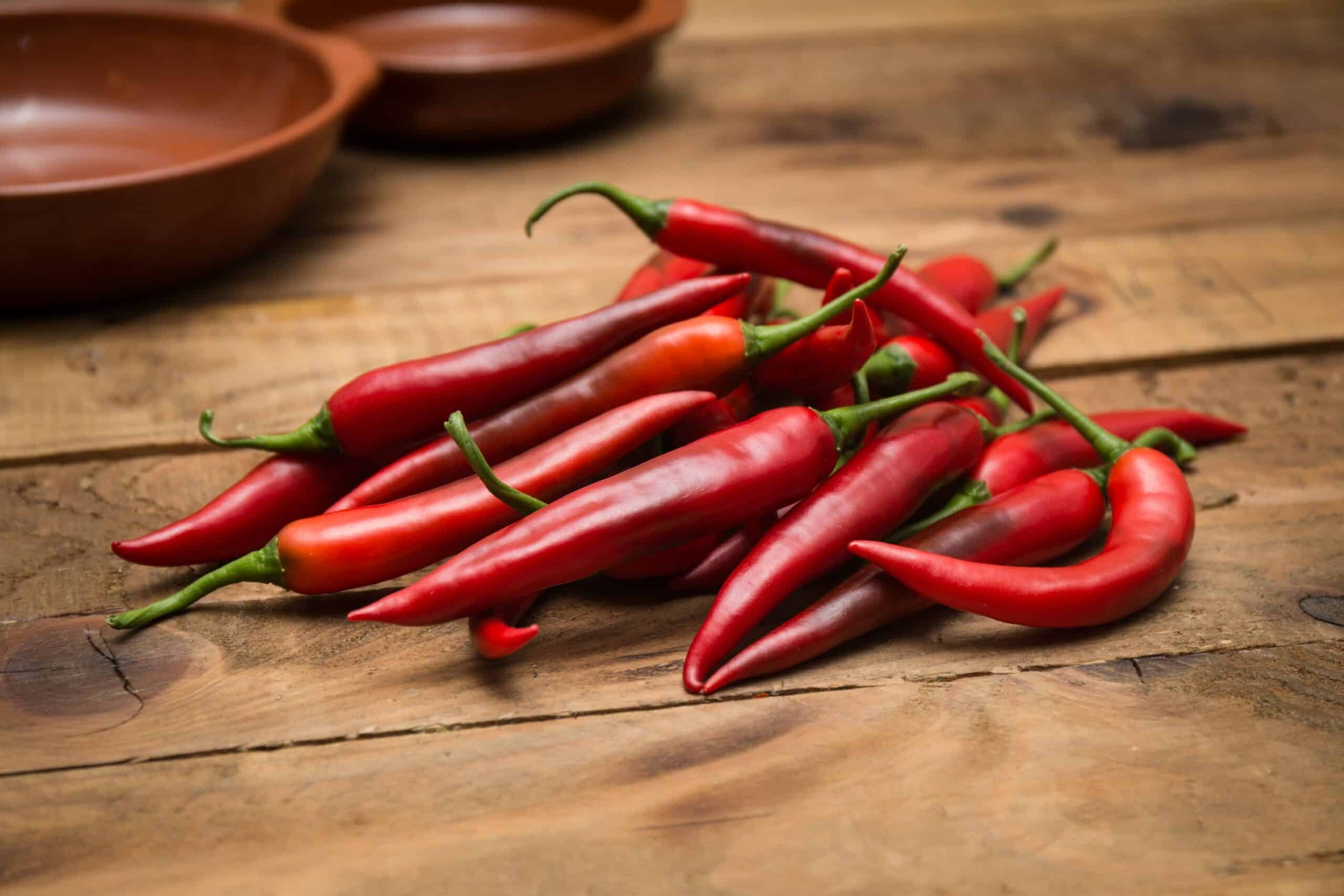


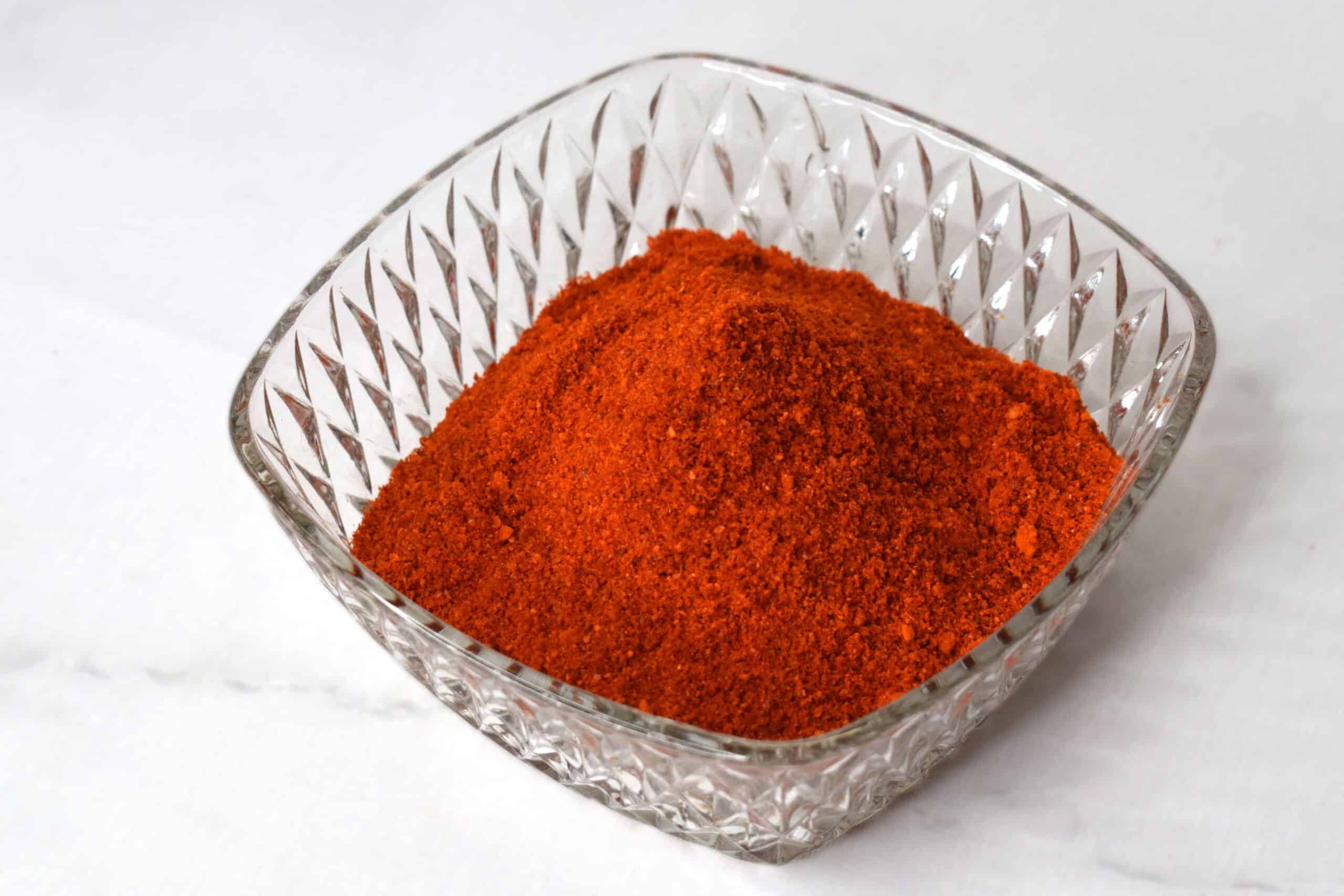
| Monday | from 8:00 a.m. to 5:00 p.m. |
|---|---|
| Tuesday | from 8:00 a.m. to 5:00 p.m. |
| Wednesday | from 8:00 a.m. to 5:00 p.m. |
| Thursday | from 8:00 a.m. to 5:00 p.m. |
| Friday | from 8:00 a.m. to 5:00 p.m. |
| Saturday | from 8:00 a.m. to 12:00 p.m. |
| Sunday | Closed |
Burg. Crezeelaan 44A
2678 KZ De Lier
The Netherlands
© Westlandpeppers | Webshop by Buro Staal

Monday, Easter Monday, the web shop will be closed. Orders placed after Friday morning 10:00 a.m. will be processed Tuesday, April 22. Happy Easter! 🐣